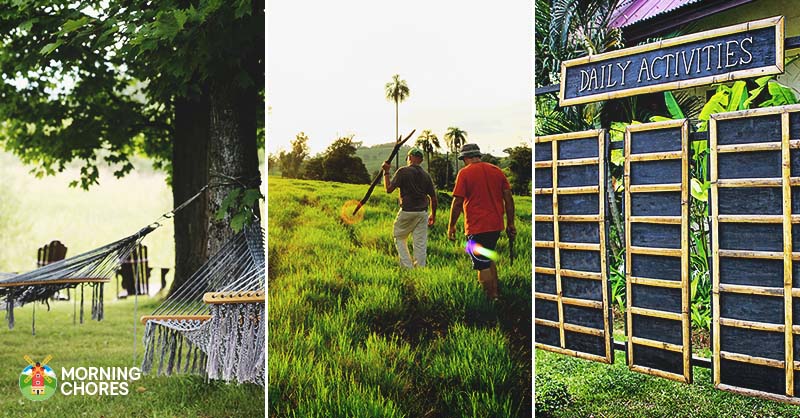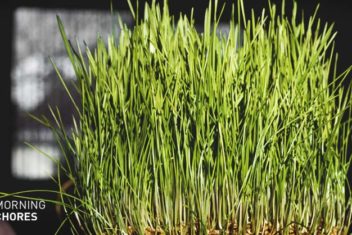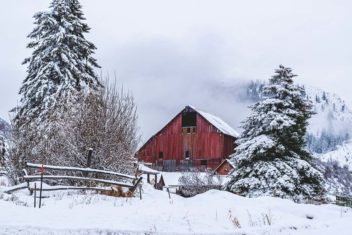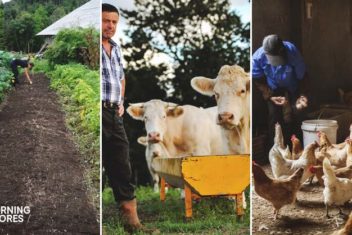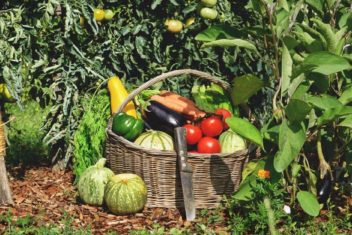Do you run a homestead and trying to be self-sufficient but struggling to keep your head above water?
You aren’t alone. It’s a very normal feeling to have, and you shouldn’t feel bad about it. Whatever your goal for this journey may be, we all go through difficult periods in our lives where life seems to be steam rolling us.
But deep down if you still don’t want to give up on your homesteading or self-sufficient journey, here are a few advice from a fellow homesteader..
1. Take a Deep Breath
It’s a simple tips, but if right now you’re in a state of panic, it’s a very effective one.
To tell you a little background on my current situation, my family and I sold our previous homestead and moved to a new, larger one. The house buying transition has been anything but smooth. Thankfully, we are finally in our new home. There is still so much to be done. There is unpacking, organizing, building animal structures, building barns, fencing, planting a garden, the list goes on and on.
It feels as though we are so behind.
At times like these, it’s important to remember than Rome wasn’t built in a day. Take your time and remember you just need to do one task at a time.
Here’s a nice GIF of a breathing pattern you can follow along to calm you down.

2. Collect Your Thoughts
As a homesteader, there are so many tasks you need to juggle every day. The chicken run that needs to be built, the garden that needs planting, the shelving you need to add to our new kitchen, and so much more.
The problem is, the more you think and fret, the less you might get done.
If you’re practicing this behavior, collect those thoughts and put them on paper. This will help you get them out of you head and actually see what needs to be done. Create a to-do list.
Here’s an example:
- Add sides to the goat shed
- Plant the garden
- Build the chicken run
- Catch up on laundry
The best time to create a to-do list for the day is the night before. Take 5-10 minutes to remember what you did today and what you need to do tomorrow. The day is still fresh for you so it’ll be easier to create a list.
When you wake up tomorrow, pick a few items from the to-do list.
If you’re feeling overwhelmed, it’s a good idea to pick only 3 tasks per day. You’ll be more productive doing 3 related tasks than by choosing more. It keeps you from being overwhelmed. It also feels much better if you manage to finish all the tasks you planned for the day.
There are smartphone apps to help you write down to-do list, but pen and paper are good enough.
We also have a free printable journal that might help you.
3. Make a priority
My husband and I both have the habit of freaking ourselves out by talking about everything that needs to be done. We have a to-do list, but our list can sometimes be too big that we don’t know which ones to do first.
If that sounds like you, you need to begin prioritizing them.
For example, in our case, finishing the goats’ shed and giving our chickens a run was super important because I knew the goats were getting hot out on pasture and our chickens had been cooped up for longer than I wanted them to be. So those are our priority number one and two. And they’re a related task, so we can do both at the same time.
You can do the same thing.
Look at your list and give them points from 1-10 with 10 being the most important or urgent item on the list and 1 the least. You can have two 10 items, or none, it’s up to you. However, understand that giving too many 10s won’t help you.
4. Work on Your List
Once you have your list and ranked them by priority, now it should be easier to pick the task to do. Try not to pick more than five things from your master list to do in a day.
Granted, this can change based on your health, schedule, or the size of the projects on your list. If you feel like five is too much, then aim for 2-3 projects a day.
Personally, I find doing tasks that are related to each other are much easier than doing unrelated tasks consecutively. So you can try it too and pick tasks from your list that are closely related.
Always set reasonable goals for your day.
5. Distractions Are the Enemy
We all have little distractions throughout our day.
For me, it was my email. My phone would constantly ding with emails all day long, and I’d check them because I never knew if it was something important or just an advertisement. Eventually, I realized how much time I was losing by that distraction, that I disabled email notifications on my phone, and I now have set times throughout my day that I allow myself to check my email.
Social media is another big one. Disabling notifications also help with social media, but for people who are addicted to Facebook or similar, you should probably delete the app from your phone and only use the web.
Kids can also be a major distraction. We are homesteaders with kids, and I know many people in the same boat. Sometimes kids make homesteading a little more challenging.
But that’s okay. Do all you can to get your children involved around the homestead. If you move a little slower getting through your to-do list because you have little ones in tow, I say cut the to-dos down and enjoy where you are at.
6. Take a Break When You Need To
We are homesteaders, not superheroes. We can only do so much in one day.
Give yourself a rest because you can only burn the candle at both ends for so long. If you don’t take care of yourself, you’ll have more problems.
Maybe the reason you are overwhelmed is that you’re tired because you’ve been pushing yourself as hard as you can. If that’s the case, give yourself a day (or even an afternoon) to get a little rest, then go at it again with a fresh outlook.
7. It’s Okay to Depend on Your Neighbors
Homesteading is all about family and community. When we fall behind, you might not always be able to just sweep in and get it all done all by yourself without seriously burning ourselves out.
If you have friends, neighbors, or loved ones close by, then ask them for help. And when they need your help, you can be there for them.
You don’t have feel like a failure if you need to ask for help. Working together is a great way to get things caught up around your homestead, and it is also a great opportunity to build and strengthen relationships in the process.
8. Downsize Your Homestead
If homesteading has been overwhelming you for quite some time and there’s still no hope in sight, maybe it’s time for downsizing.
When people start to plan their homestead, we tend to imagine having a big farm to support the family. We forget that the more stuff you have, the more things you need to manage, and the more clutter you will have. There’s a limit to how much a person can do.
The solution is downsizing your homestead.
You can downsize your homestead by moving to or utilizing a smaller land, smaller house, smaller garden, fewer animals, and getting rid of stuff. There’s no shame in that, no one will judge you.
Once you’ve downsized your homestead, you will have less things to do which means less stress and hopefully more appreciation for the things you do.
8. Don’t Give Up, or Do
Homesteading isn’t easy. Raising your own food and being self-sustained is a very gratifying lifestyle, but it requires a lot of work.
Regardless of how large of a homesteader you are, anything extra you do to be more self-sufficient is still one extra thing you have to keep up with.
If you’re on the verge of giving up, remember why you started it in the first place and and how far has it been.
In most circumstances, you can get right side up in your chores list again. Then you can keep pushing forward with your dream. Keep your head up, keep pushing forward, and give yourself grace.
Or not.
Maybe it’s really the time to throw in the towel, and that’s okay too. It was your choice to start the journey, and it’s also your choice to end it. But it’s not the end of life, because homesteading and self-sufficiency are not the only way to live.
So don’t be afraid to quit. You’ve tried and you’ve learned something along the way. That alone is precious.
